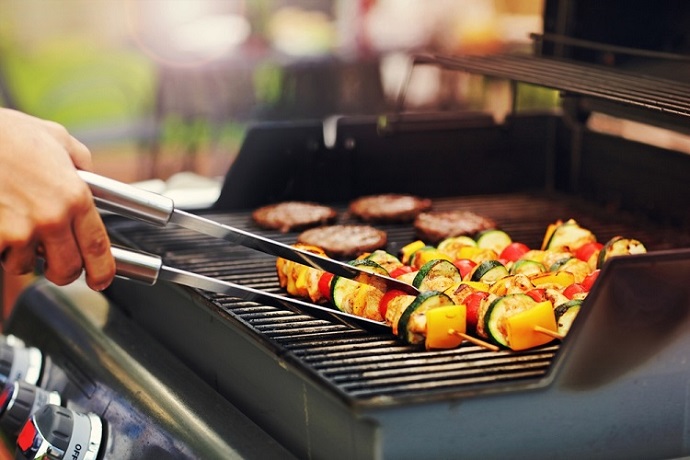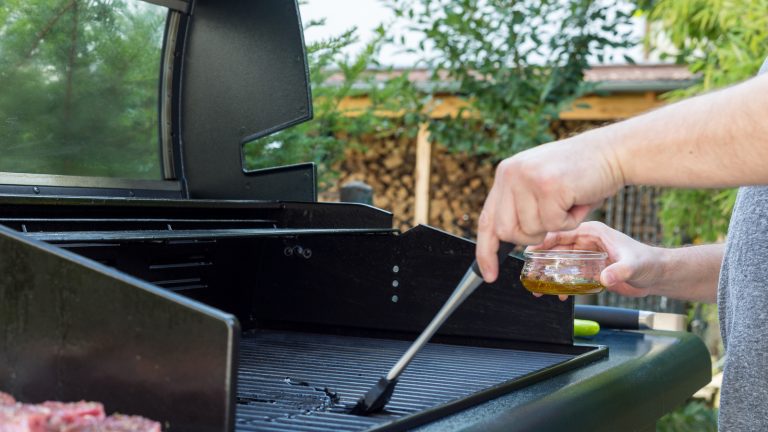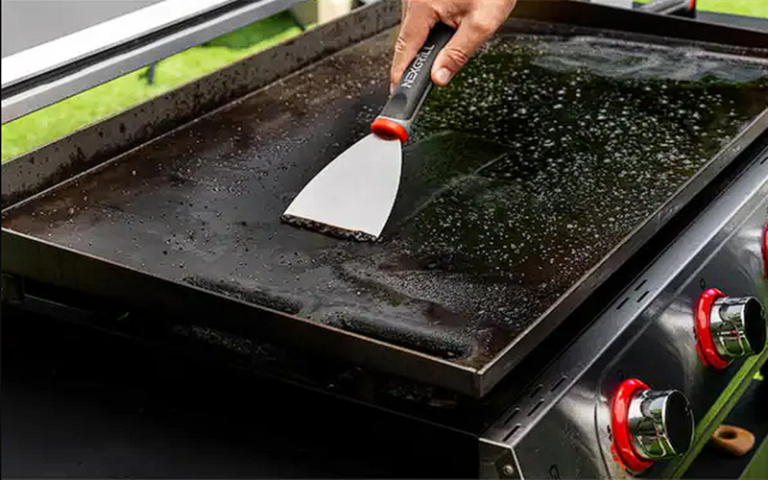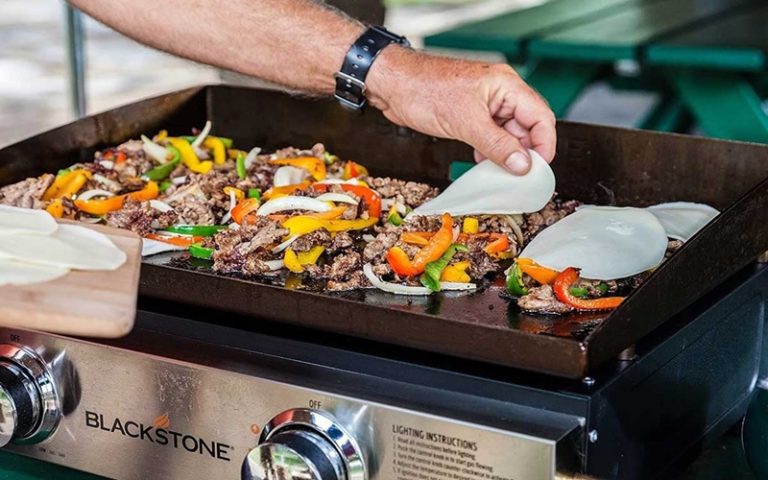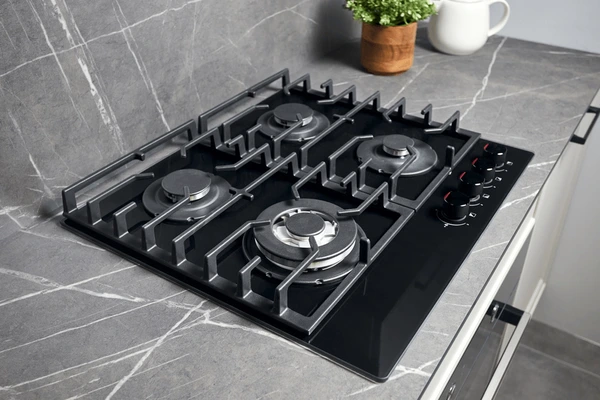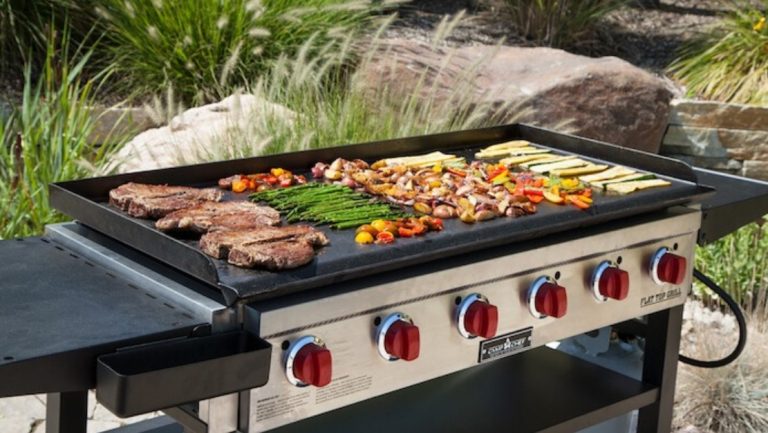Flat Top Grill vs. Regular Grill: Which Is Right for You?
Grilling has been a beloved cooking technique for centuries, providing that unmistakable smoky flavor that makes summer barbecues memorable. However, when it comes to choosing the right grill, there are several options available, and two popular choices are flat-top grills and regular grills. Each offers distinct advantages depending on your cooking style and preferences. In this article, we’ll dive into the differences between flat-top grills and regular grills, helping you decide which one suits your culinary needs.
What is a Flat Top Grill?

A flat-top grill is a type of grill with a large, flat, and solid cooking surface. Unlike a traditional grill that has open grates, the flat top is a smooth steel or cast-iron surface that provides consistent heat across the entire cooking area. This grill style is often compared to a griddle and is widely used in commercial kitchens because of its versatility and large cooking space. If you’re looking for a versatile option for your outdoor kitchen, considering the best outdoor griddles might be a great choice.
Some flat-top grills have additional heat zones, allowing you to cook multiple types of food at varying temperatures simultaneously. You’ll often find flat-top grills in restaurants or food trucks, but many home cooks are now incorporating them into their outdoor kitchens.
What is a Regular Grill?

A regular grill, also known as a charcoal or gas grill, is what most people think of when they imagine backyard grilling. These grills use either gas (propane or natural) or charcoal as their fuel source. Regular grills typically have grates that allow food to come into direct contact with the heat source, resulting in the classic char marks and smoky flavor many grill enthusiasts love.
The design of a regular grill makes it ideal for cooking a wide range of meats and vegetables, where high heat and flame contact play a crucial role in creating flavor.
Flat Top Grill vs. Regular Grill: Key Differences
Now that we’ve established what each type of grill is, let’s explore the key differences between the two:
1. Cooking Surface
- Flat Top Grill: The flat, continuous cooking surface of a flat top grill provides an even heat distribution across the entire grill. You don’t have to worry about flames or hotspots. Because of the solid surface, food does not come into direct contact with an open flame. This makes it excellent for cooking delicate items like pancakes, eggs, seafood, and vegetables. Additionally, you can use a variety of cooking techniques like sautéing, stir-frying, and even searing on a flat top.
- Regular Grill: Regular grills have open grates that allow flames to directly contact the food, creating a distinctive smoky flavor and charred marks. The cooking surface on a regular grill can be uneven at times due to flare-ups or hotspots, especially on charcoal grills. While ideal for grilling meats like steaks, burgers, and chicken, the grate can make it harder to cook smaller or more delicate foods without them falling through.
2. Flavor
- Flat Top Grill: Since food does not touch the flames on a flat top grill, you won’t get the same smoky flavor or sear marks that come with traditional grilling. However, the flat top allows you to caramelize and sear food evenly, resulting in a rich, browned flavor, especially for stir-fries, breakfast dishes, and sandwiches. You can also cook in oil or butter, giving you more control over the flavor.
- Regular Grill: The hallmark of regular grills is their ability to infuse food with a smoky flavor from either burning charcoal or propane. When fat drips onto the flames, it creates that classic grill flare-up, adding a charred taste to your food. The grill marks on meats and vegetables are a visual and flavor cue that many people associate with outdoor cooking.
3. Versatility
- Flat Top Grill: Flat top grills are incredibly versatile. They allow you to cook a wide variety of foods, from breakfast staples like bacon, eggs, and pancakes to stir-fried vegetables, burgers, and sandwiches. You can even cook delicate foods like fish without worrying about them sticking or falling apart on the grates. The ability to use pots and pans on the flat top further expands its range.
- Regular Grill: Regular grills are great for traditional grilling methods, like searing steaks, smoking meats, or grilling vegetables. While you can cook a range of foods, certain dishes like pancakes, scrambled eggs, or stir-fries may require extra equipment like a cast iron pan or grill mat. However, for that authentic grilled flavor, a regular grill is the better option.
4. Ease of Use and Maintenance
- Flat Top Grill: A flat-top grill is relatively easy to use, especially for beginners. There’s no need to monitor flame levels or worry about flare-ups. You simply preheat the surface and start cooking. Cleaning a flat-top grill is also straightforward. You just need to scrape off food debris and wipe the surface down with a damp cloth or water while it’s still warm.
- Regular Grill: Using a regular grill can involve more of a learning curve, particularly with charcoal grills, where you need to manage the heat manually. Flare-ups, uneven cooking, and managing the heat zones can be challenging for beginners. Cleaning a regular grill often involves brushing the grates, removing ash (for charcoal), and ensuring the grease traps are emptied regularly.
5. Outdoor Cooking Experience
- Flat Top Grill: Flat-top grills provide a restaurant-style cooking experience outdoors. Because there’s no open flame, it’s a safer option for smaller outdoor spaces or families with children. They allow for large-batch cooking and can serve as an extension of your indoor kitchen for outdoor gatherings.
- Regular Grill: Nothing beats the authentic outdoor grilling experience of a regular grill. The flames, the smoky aroma, and the ritual of turning meats over an open flame are part of what many people love about barbecuing. It’s the quintessential experience of summer, often associated with special events and gatherings.
6. Cost
- Flat Top Grill: Flat-top grills tend to be more expensive than regular grills, particularly if you’re opting for larger, commercial-grade models. The price is typically due to the heavy-duty materials used, such as cast iron or stainless steel, as well as the larger cooking surfaces.
- Regular Grill: Regular grills come in a wide range of prices, from budget-friendly charcoal grills to high-end gas grills. You can easily find affordable options, though some premium gas grills with extra features, like side burners and rotisseries, can also be quite pricey.
7. Cooking Capacity

- Flat-Top Grill: The large, uninterrupted cooking surface of a flat-top grill makes it ideal for feeding a crowd. You can cook multiple foods at once, without the worry of different cooking times, as you would with a regular grill.
- Regular Grill: While regular grills come in various sizes, they may be more limited in cooking capacity, especially when managing different heat zones for various types of food.
Pros and Cons of a Flat Top Grill
Pros:
- Versatile for cooking various types of food
- Even heat distribution
- Ideal for large-batch cooking
- Easy to clean and maintain
Cons:
- Does not provide the smoky flavor of a regular grill
- Can be expensive
- Heavier and bulkier than some regular grills
Pros and Cons of a Regular Grill
Pros:
- Provides classic grilled flavor and sear marks
- Variety of models to choose from (gas, charcoal, or electric)
- More affordable options are available
Cons:
- The higher learning curve for beginners
- Potential for flare-ups and uneven cooking
- Harder to clean, especially for charcoal grills
Conclusion
When choosing between a flat-top grill and a regular grill, consider your cooking style and what’s most important to you. If you love the versatility of cooking multiple types of foods and prefer a smooth cooking surface, a flat-top grill is a great investment. However, if the smoky flavor and charred grill marks are a must for your outdoor cooking, a regular grill will give you that classic barbecue experience.
For many, the choice comes down to personal preference, but whichever option you choose, both types of grills offer a unique and enjoyable way to cook delicious food outdoors.

James Carter is the founder of BestOutdoorGriddle.com, a website dedicated to helping outdoor cooking enthusiasts find the best griddles for their BBQ and camping needs. Based in Dallas, Texas, James combines his passion for outdoor cooking with his expertise in product research to provide comprehensive reviews and guides. With a keen eye for quality and functionality, James strives to help fellow grill masters make informed decisions when selecting outdoor griddles. Through his website, he aims to enhance the outdoor cooking experience for barbecue lovers and campers alike.

